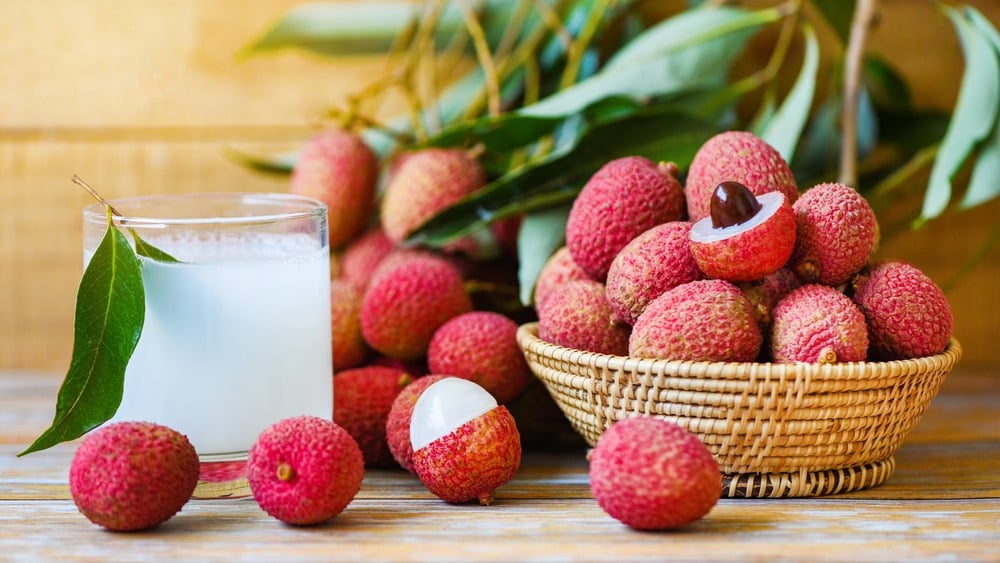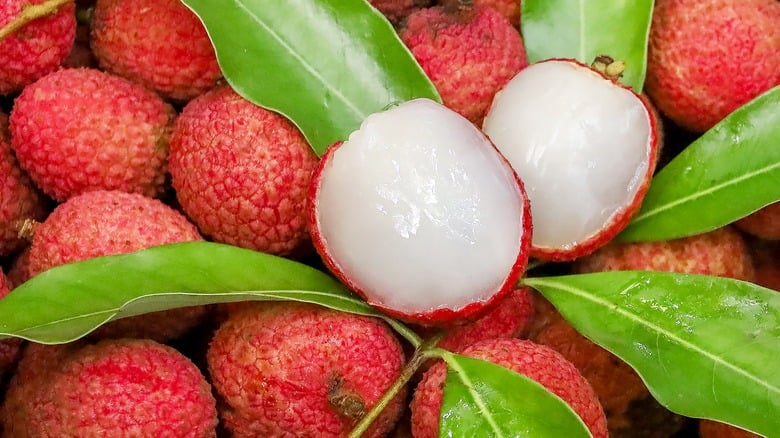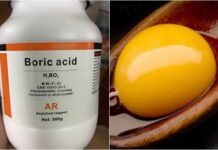Lychee, the quintessential summer fruit of Vietnam, captivates not only with its sweet and juicy flavor but also its abundant health benefits, owing to its high content of vitamin C, fiber, and antioxidants. However, despite the numerous benefits of lychees, traditional Eastern medicine believes that this fruit has a heating property. Overindulging may lead to internal heat, resulting in issues such as acne, mouth ulcers, or skin irritation. So, how can one safely indulge in lychees without worrying about these potential side effects? This article will reveal expert-recommended tips to help you fully enjoy this delicious fruit while maintaining your health and clear skin.
Tips for Enjoying Lychees Without the Heat
1. Practice Portion Control
One of the most important rules when it comes to eating lychees is moderation. According to Polyclinic Doctor of Oriental Medicine Bui Dac Sang, Hanoi Oriental Medicine Association, adults should consume no more than 8-10 lychees at a time, while children should be limited to 3-4. This helps prevent a sugar overload in the body, reducing the risk of internal heat and acne breakouts. Especially for those with yin deficiency, internal heat, or existing conditions like diabetes and chickenpox, it is advisable to refrain from eating lychees to avoid aggravating their health conditions.

2. Eat the White Membrane Along with the Fruit
A folk tip endorsed by many experts is to consume the white membrane that surrounds the lychee aril. According to Ha Tinh Newspaper, this membrane has a cooling effect, helping to neutralize the heating property of the fruit and reducing the chances of a “hot flash.” Although the membrane has a slightly astringent taste, eating it not only helps reduce heat but also provides additional vitamins and minerals. Similarly, the white part at the tip of the lychee seed has a cooling property, aiding in heat balance.
3. Drink Cooling Beverages Before Indulging
To minimize the risk of internal heat, consider drinking diluted salt water, cold herbal tea, winter melon soup, or mung bean soup before eating lychees. Doctor of Oriental Medicine Bui Hong Minh, former Chairman of Ba Dinh Oriental Medicine Association, Hanoi, shared in the Tuoi Tre Cuoi Newspaper: “Salt water helps prevent the generation of internal heat and is suitable to consume with heating fruits like lychees.” These drinks not only help cool the body but also aid in cleansing the intestines and reducing the risk of toxin buildup, which can lead to acne.
4. Soak Lychees in Diluted Salt Water
Before consuming lychees, soak them in diluted salt water for about 15-20 minutes. According to Reviews365 Newspaper, this method not only helps remove dirt, bacteria, and pesticide residues from the fruit’s surface but also reduces its heating property. After soaking, keep the white membrane intact when peeling to optimize its cooling effect.

5. Choose the Right Time to Eat Lychees
The timing of lychee consumption also significantly impacts whether it causes internal heat. Master of Science, Doctor Doan Thi Tuong Vi, former Head of Nutrition Department, Hospital 198, advised in the Kinh Te & Do Thi Newspaper: “Avoid eating lychees on an empty stomach, as the high sugar content can stimulate the gastric mucosa, causing pain, inflammation, or ‘lychee drunkenness,’ characterized by dizziness and nausea.” It is best to eat lychees 2 hours after a meal when your body has already absorbed sufficient nutrients from the food, thus reducing the impact of the fruit’s heating property.
6. Pair Lychees with a Balanced Diet
To minimize the risk of acne breakouts, combine lychee consumption with a diet rich in cooling foods. According to Kenh 14 Newspaper, dishes like mung bean soup, winter melon soup, or bitter gourd not only help reduce heat but also provide moisture to the skin, aid in sebum control, and prevent acne. Additionally, staying adequately hydrated daily is a simple way to maintain skin moisture and enhance metabolism.

































